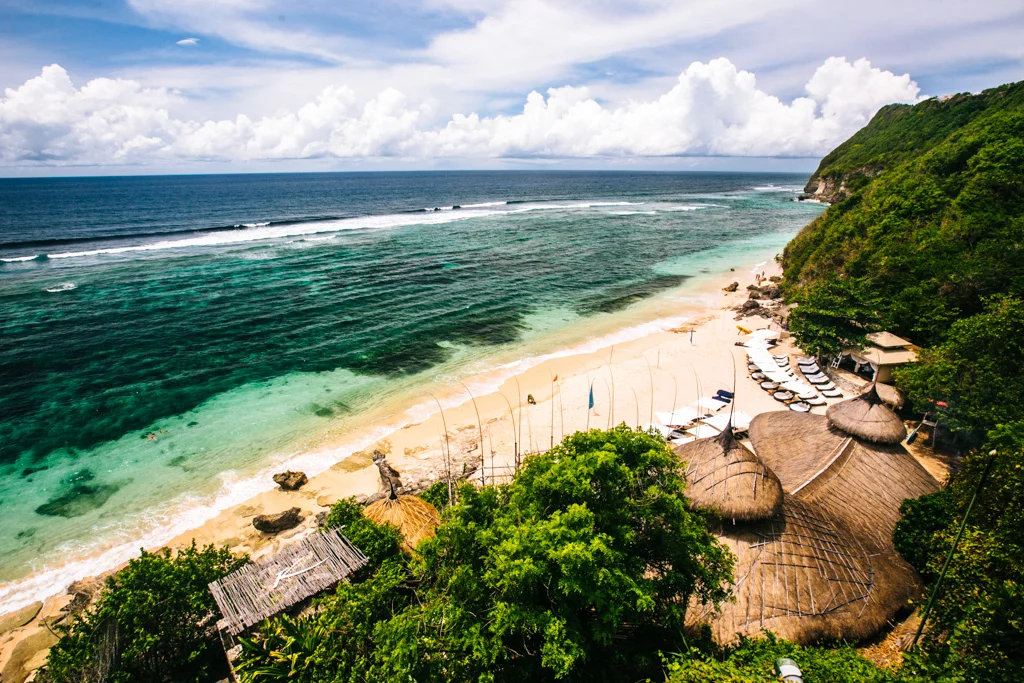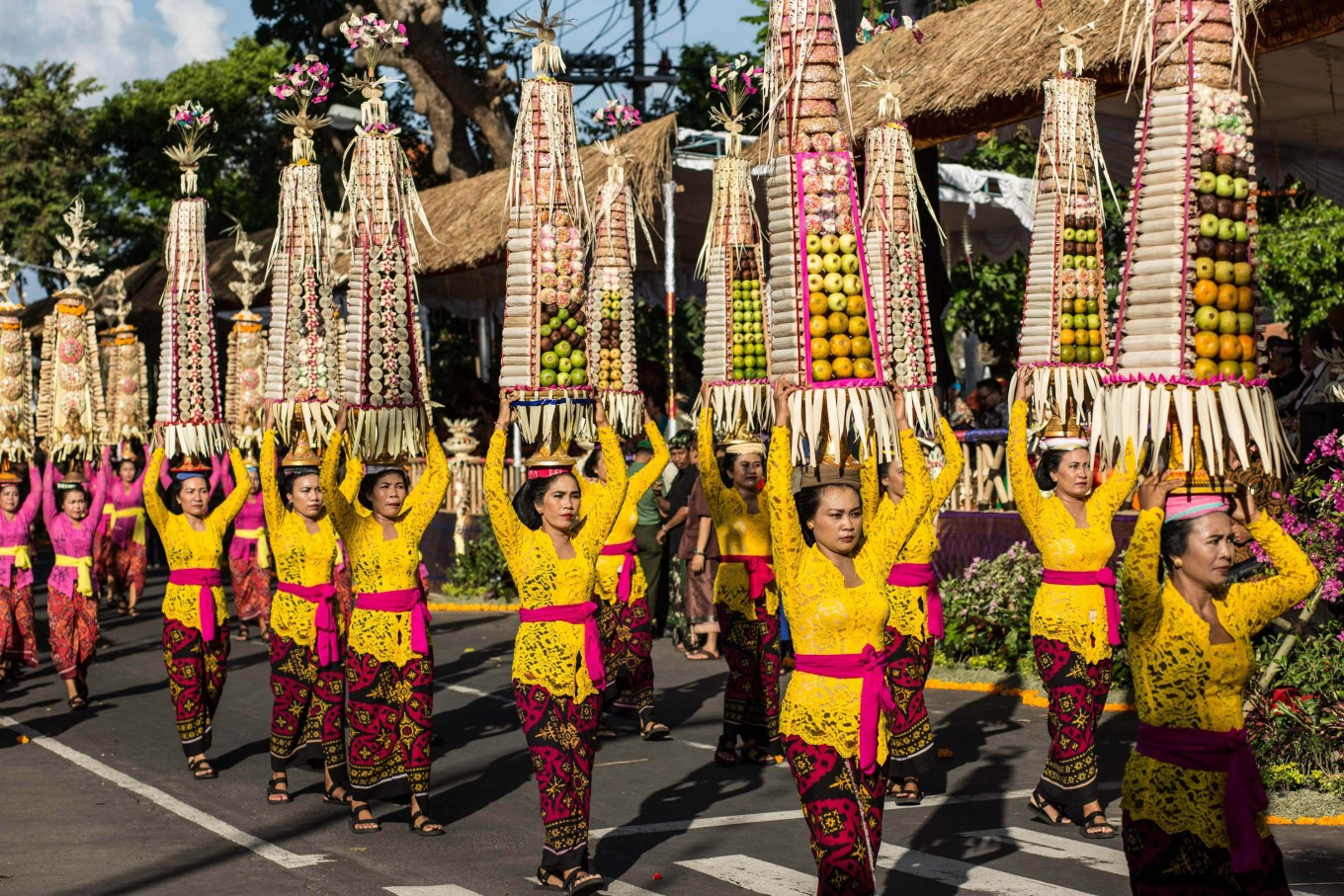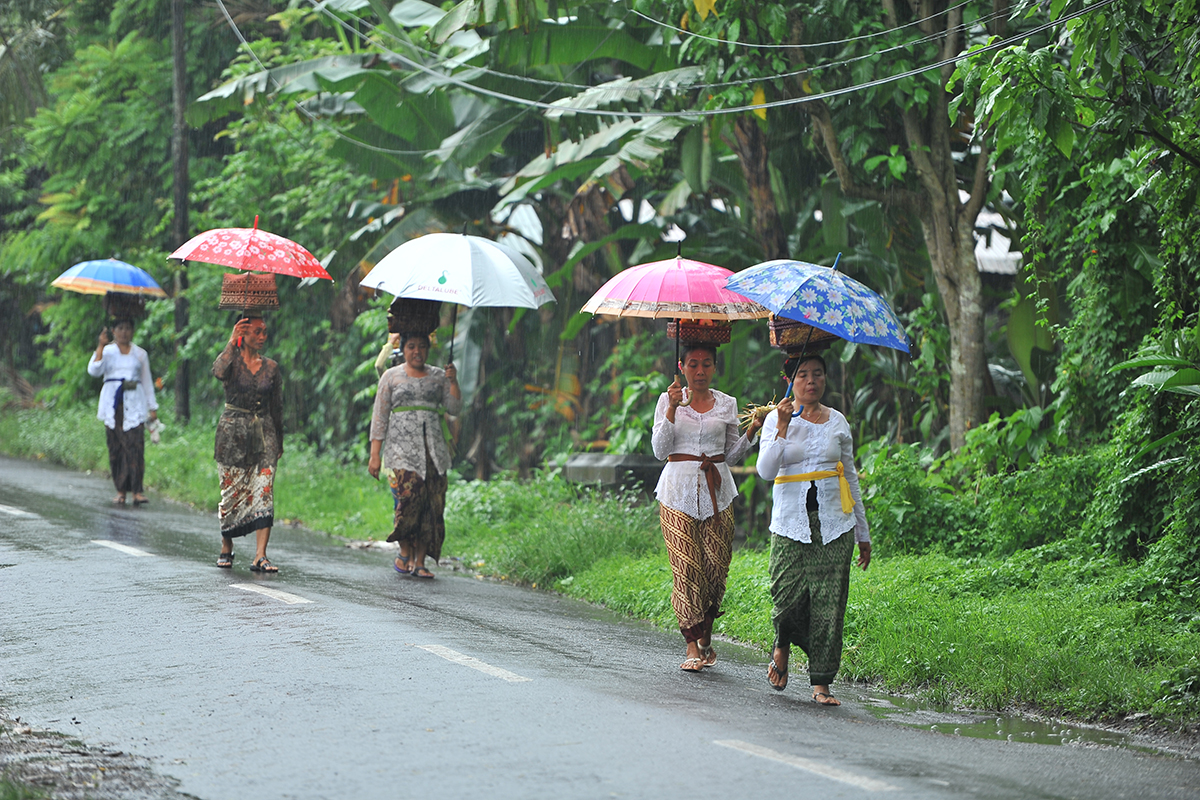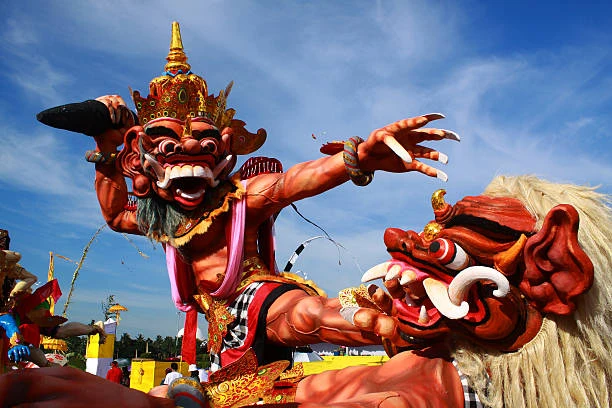Bali’s magic depends on picking your dates wisely. Deciding when is the best time to visit Bali for you is imperative. Go during peak season, and beaches get crowded fast—good luck snagging that perfect spot. Show up in monsoon months, and sudden rain might wash out plans.
Weather in Bali
Bali keeps things simple with two main seasons: dry and wet. No need to juggle four seasons here! Expect around 12 hours of sun most days, year-round. Temps usually sit between 26-33°C (79-91°F)—perfect if you’re escaping colder weather. That steady warmth makes Bali a solid pick whenever you visit.
But don’t get too comfortable with that simplicity. Bali’s mountainous heart creates sneaky microclimates. Kuta’s beaches are baking under clear skies while Ubud’s jungles get soaked—and they’re just an hour apart! Northwestern areas might do their own thing entirely. Smart travelers check regional forecasts before day trips. Those elevation changes mean you’ll want both sunscreen and rain gear, even during drier months.
July–August and December (The High Season)

If you’re wondering about the best time to visit Bali, mark July and August on your calendar. Those are the driest months. You’ll get plenty of sunshine, clear skies, and almost no rain messing up beach days or hikes.
But here’s the catch: everyone else knows this too. Prices jump, beaches get packed, and you’ll need to book everything way ahead. Perfect weather? Sure. But peace and quiet? Not so much.
Bali’s peak season turns its quiet charm into a full-blown tourist frenzy. Hit spots like Kuta, Seminyak, or Nusa Dua, and you’ll find beaches packed by mid-morning—get there at dawn if you want a shot at a good towel spot. Southern roads clog up fast; a 30-minute drive can easily stretch to an hour.
December mirrors high-season crowds but brings a weather twist. Visiting Bali in August guarantees arid days without a drop in sight, while December dances between wet and dry months. Early weeks usually stay dry—perfect for beach days or hikes—but things shift around Christmas. You’ll notice quick tropical showers popping up most afternoons, especially near New Year. Don’t stress, though. These storms rarely last long. They’ll cool things down, clear the haze, then vanish before sunset.
The High Season’s Events & Activities

- Bali Arts Festival (June/July): Month-long celebration with daily dance, music, and craft performances, many free.
- Family Travel: July aligns with global school breaks, making it the perfect time to visit the best beaches in Bali.
- December Festivities: Early December offers dry weather for beach outings; Christmas and New Year bring vibrant energy, though afternoon showers may occur.
- Surfing & Crowded Beaches: Uluwatu and Seminyak attract surfers and sunbathers; expect packed shores and premium pricing.
April–June and September–October (The Shoulder Season)

When it comes to Bali, best time to visit lands is during the shoulder seasons. Travelers who return yearly swear by these months—they’re quieter than peak times but sunnier than rainy season. Wondering about the best time to go to Bali while avoiding crowds? Aim for April-May or September-October. You’ll skip crowds, enjoy dry days, and avoid steep prices or stormy weather. It’s Bali at its most balanced, no extremes.
April brings drier days as Bali’s wet season wraps up. Bali in April glows green—rice terraces hit peak vibrancy, and paths stay quiet before crowds arrive. After months of rain, the island feels refreshed. Hotels and villas start nudging prices up, but deals still pop up, especially if you book early.
Bali in June brings short rain showers some afternoons—might pause beach time or wander around. Humidity dips lower than in spring months, so checking out temples, local markets, or walking trails feels easier, especially if sticky heat isn’t your thing. Ocean stays warm enough for swimming all day, no need to rush out. Water sports? Perfect conditions. Just pack light layers; weather shifts fast but stays mild overall.
Visiting Bali in September? Temperatures usually sit between 20 and 30°C (68 to 86°F) all month. That range means you’ll stay comfy without any big swings. Planning a trip to Bali in October? You’ll catch the tail end of the dry season.
The Shoulder Season’s Events & Activities:

- Nyepi (March/April): Bali’s Day of Silence (late March or early April) features eerie quietude and vibrant Ogoh-Ogoh (monster) parades the night before.
- Rice Terraces & Hiking: April’s post-rain greenery makes Tegallalang and Jatiluwih rice fields ideal for photography and hikes.
- Bali Arts Festival (June): Cultural workshops and performances begin in June, offering immersive local experiences.
- Quiet Exploration: September–October’s mild weather (20–30°C) is perfect for temple visits (e.g., Tanah Lot), market strolls, and snorkeling in serene conditions.
January–March and November (The Low Season)

Bali’s rainy season typically runs November to March, peaking in January and February with heaviest rain. But here’s a heads up for visitors: the rainy season Bali has isn’t endless gray skies. Downpours usually hit hard for a few hours, mostly late afternoons or evenings. Mornings? Often sunny and dry, perfect for getting out before clouds roll in. When storms pass, temps dip a bit, but Bali’s rainy season still leaves plenty of time for exploring between showers.
Bali in November shifts firmly into wet season rhythms. Days grow stickier as weeks pass. Afternoon storms roll in more often, some packing intense downpours. But here’s a secret seasoned visitors know: this month brings quieter temples, emptier beaches, and hotels slashing rates. Sure, you’ll dodge raindrops now and then—but trade-offs feel worth it.
With popular spots less packed, it’s easier to linger at a carved stone gateway or watch waves hit deserted shores without jostling for space. Lower prices mean stretching budgets further, maybe splurging on a villa with a jungle view.
Thinking about Bali in February? That’s the peak rainy season. Expect rain daily—quick showers or hours-long storms turning streets into streams. Upside? Lower costs on everything, quieter temples, beaches nearly empty. Locals keep routines unchanged by weather, so you’ll see daily life unfold authentically. Is it the worst time to travel to Bali? It depends. If you’re cool with rain and want Bali without the bustle, February will do.
Popular Times to Visit Bali

Planning your trip around Bali’s cultural calendar? While weather matters, festivals and events can make certain months stand out as the best time of year to visit Bali for those wanting more than just beaches.
Here’s what to know:
- Nyepi (March/April): If you recall, Nyepi is a shoulder season event. Picture this: for 24 hours, everything stops. No flights, no traffic, no one outdoors—just stillness. But the night before? Villages come alive with towering papier-mâché monsters, snarling and spinning through streets as part of purification rituals. This event kicks off the Balinese New Year. Leading up to it, locals prepare through ceremonies and the famous Ngrupuk Parade. That’s when those massive monsters—known as Ogoh-Ogoh—get hauled around, symbolizing the purge of negative energy.
- Galungan & Kuningan (dates vary): Streets fill with bamboo poles called penjor. Temples and homes host centuries-old ceremonies, giving travelers a peek into daily spiritual life.
- Bali Arts Festival (June/July): As I’ve said, this month-long fest is all about dance, music, and crafts. Drop by daily for live shows or workshops, most free. You’ll see everything from traditional dance crews. Music acts range from soulful local tunes to modern rhythms. Ever tried making pottery or weaving? Here’s your chance. Local artisans run workshops where you can get messy, pick up skills, and chat with folks who know their craft inside out.
July’s often seen as the best time to travel to Bali for families—it lines up with school breaks worldwide. Beaches get lively, restaurants buzz with chatter, and spots like Kuta keep energy high late into the night.
FAQ
What month should you visit Bali?
Deciding the best month to visit Bali? It hinges on what you value most. Want pleasant weather without swarms of tourists or sky-high prices? May, June, or September hit the sweet spot—Bali feels balanced, with dry days and manageable crowds. Prefer nonstop sunshine and lively vibes? July and August deliver, though you’ll battle packed beaches and premium rates.
For savings without sacrificing the island’s charm, try February or November. Accommodation, flights, and tours often drop in price, letting you experience Bali’s magic on a budget. Just pack patience for occasional rain showers and adjust plans as needed.
When is the cheapest time to visit Bali?
Wondering when is the best time to go to Bali without overspending? Aim for January to March—Bali’s rainiest months—when crowds thin out. Hotel rates often plummet by 30-50% compared to peak seasons, letting budget travelers snag a villa or five-star stay that’s usually pricey.
Airlines frequently slash fares these months to fill seats despite daily showers. You’ll also notice restaurants, spas, and tour guides getting creative with deals: think discounted packages or free add-ons to draw visitors.
How long should you visit Bali?
When choosing your best time to go to Bali, think beyond the weather. Longer stays mean fewer crowds in shoulder seasons. Spending at least seven days gives you enough time to check out one or two areas without sprinting between spots or wasting too much time moving around.
If you’ve got two weeks, you’ll get a fuller picture—stroll south’s beaches, soak up culture in Ubud, and maybe hit quieter north or east coasts most visitors skip. Within three weeks or longer, add trips to nearby spots like Gilis or Nusa Penida. You could even pop over to Lombok for a mix of adventures while keeping Bali as home base.
Summing Up
Bali’s got something for everyone, no matter when you arrive. Want to find peace with Ubud’s healers and yoga classes? Or chase waves at Uluwatu’s tougher surf spots? Prefer relaxed beach days with kids in Sanur’s calm waters? Maybe you’re just here to sip coconut drinks by a pool as sunsets light up the sky. Whatever you pick, Bali delivers year-round.
Pack clothes suited to rainy or dry seasons, depending on your plans. But don’t stress too much—this island has a way of shifting moods quietly. Even a short stay can leave you feeling different, lighter somehow.
Here’s the thing: there’s no single best time to visit Bali. It’s about what you want. Crowds, weather, prices—they all shift monthly. Pick dates that fit your vibe, roll with it, and let the place surprise you. Same magic, fresh adventures every time.






0 Comments